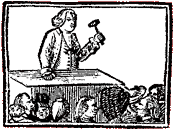Two Looks at Revolutionary New England
First, Derek W. Beck adapted material from his book The War Before Independence, 1775-1776 to discuss “Henry Knox’s ‘Noble Train of Artillery:’ No Ox for Knox.”
As Beck says, most of the pictures of the mission to bring cannon and mortars from Lake Champlain to the siege of Boston show men prodding oxen through snow. But the documentary record shows Knox renting horses for most of the trip.
The next day, Prof. Len Travers shared “Casualty Of Revolution: The Sad Case of Betty Smith.” Tracing a woman named Elizabeth Smith in eighteenth-century America is a formidable challenge, but this one made herself notorious. She first shows up in the diary of young Anna Green Winslow, as Travers explains:
Smith may have been a servant for the Winslow family at some time. That’s at least one way of explaining Anna’s reference in a letter to her mother on February 25, 1771: “Dear mamma,” she began, “I suppose that you would be glad to hear that Betty Smith, who has given you so much trouble, is well & behaves herself well. & I would be glad if I could write you so.” The next word, of course, was “but.”Next Smith fell into crime, followed by stops at the whipping-post, the Castle, the workhouse, and back to jail. She tried to escape in the worst possible way, only to be convicted of theft again in March 1772 and sent to the gallows.
For Betty had fallen into bad company—the very worst kind, some would have said. “But the truth is,” Anna continued, “no sooner was the 29th Regiment encamp’d upon the common [in 1768], but miss Betty took herself among them (as the Irish say) & there she stay’d with Bill Pinchion & awhile.”
Betty Smith wasn’t sent off to be hanged, even though theft was still potentially a capital crime. Instead, she had to stand on the gallows with a noose around her neck and then be whipped again as a reminder to behave better.
Beside Smith stood a man named John Sennet, convicted of having sex with an animal on Boston Common. Again, earlier in the century other men and boys convicted of that crime had been executed (along with the unfortunate animals). Though still founded on painful corporal punishment, the colonial justice system became less harsh over time.
Travers’s short article doesn’t discuss another source on Betty Smith, a broadside poem probably sold on the day that she and Sennet stood on the gallows. Anthony Vaver shared that doggerel on Early American Crime. It includes this verse put into the mouth of John Sennet:
Though Murd’rers pass with crimes of deeper hue,I suspect “Murd’rers…eas’d…from their fate” refers to Ebenezer Richardson, who had been convicted of murdering Christopher Seider in 1770 yet still not sentenced as Massachusetts’s royal judges awaited a pardon from London.
Thieves and house-breakers always have their due.
Cushing has eas’d the former from their fate,
But vengeance always does on Villains wait.
Those lines point to Judge William Cushing, and an earlier verse puns on the name of Judge Nathaniel Ropes. Both men had been appointed to the court after Richardson’s trial, but they weren’t helping to hang him. Boston’s Whigs wanted to keep that injustice in front of people’s eyes, and Betty Smith’s time on the gallows provided an opportunity.


